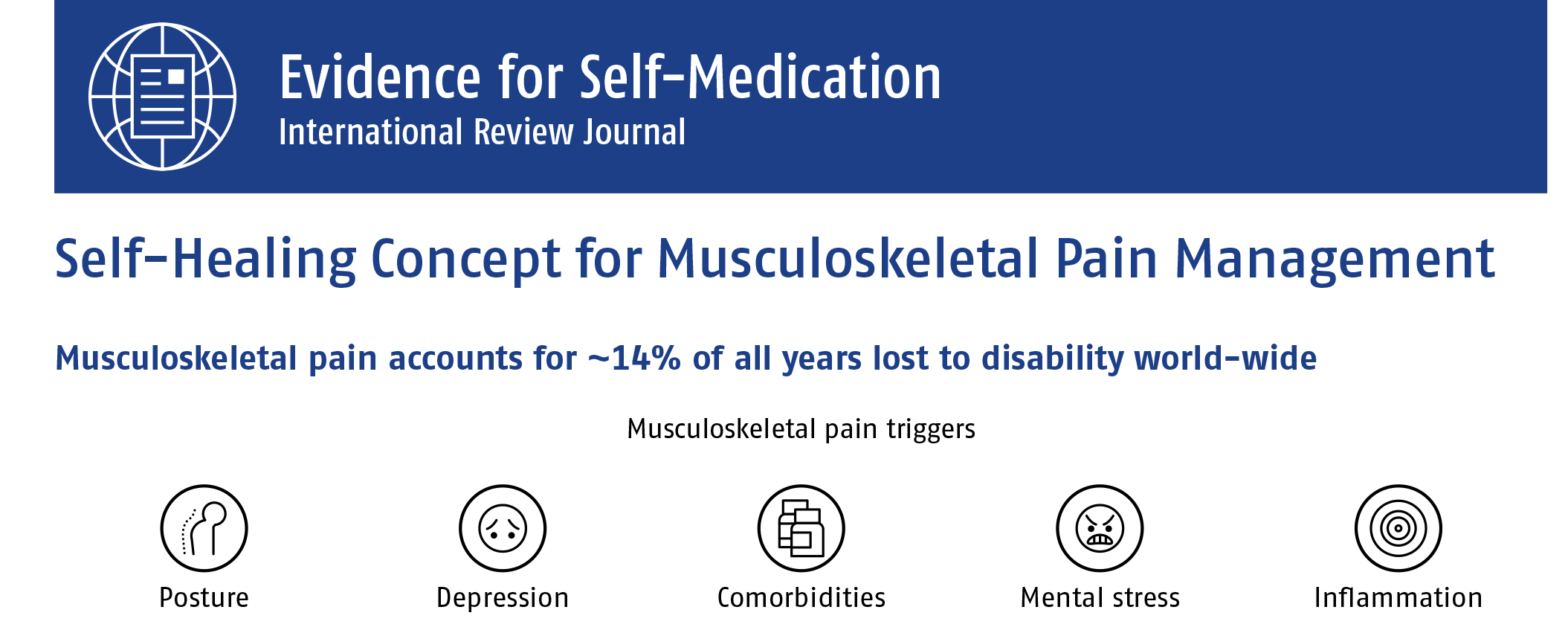Acute pain warns a person that some type of injury or stress has occurred that needs immediate attention. Musculoskeletal disorders, a condition that affects the bones, muscles, ligaments, tendons, and nerves, are one of the most frequent types of pain and account for 14% of all years lost to disability world-wide [1]. Known triggers of musculoskeletal pain include obesity and a sedentary lifestyle, trauma and injury, overuse, aging, inflammation, and mental health disorders, but underlying causes often remain unclear and complex to elucidate. Musculoskeletal pain, especially when it is recurrent, may influence quality of life and can be responsible for impairing autonomy and decreasing independence, and functional capacity. The current research in pain reveals that our bodies have Self-Healing capacity and as modern medicines have helped to alleviate pain conditions, less attention has been given to leveraging and enhancing the Self-Healing powers of our body.
 Global
GlobalSelf-Healing concept for musculoskeletal pain management: An evidence-based review
Conventional treatments of musculoskeletal pain include rehabilitation, non-steroidal anti-inflammatory drugs and, sometimes, opioids or surgery. McSwan et al. [2] have recently reviewed the scientific evidence supporting Self-Healinga as a concept for the management of musculoskeletal pain, the underlying mechanisms and how this can be supported in an integrative approach for pain management. There are five known body systems as indicated in Figure 1 which are part of the Self-Healing process working in a balanced way and in harmony with the ultimate goal to help relieve pain induced by various triggers. A systematic review of 49 surveys conducted in 15 countries found evidence of substantial application of complementary and alternative approaches, particularly in the adult general population [3]. Reflecting this reality, complementary and alternative medicine (CAM)b have increasingly been adopted in applicable guidelines including physical therapy/massage, exercise, thermotherapy, ultrasound, acupuncture, medical devices, and yoga [2].
Integrative medicinec may reduce the reliance on conventional analgesics, thereby reducing the risk for side effects [2]. Concomitantly, psychosocial factors can help to maintain both psychosocial and spiritual health, e.g., through techniques such as mindfulness, and activities such as yoga or physical exercise can help mental health and reduce depression, which in turn can lead to reduced pain. This concept has been supported by clinical studies, where, for example, qualitative interviews showed a perceived pain relief and enhancement of well-being when complementary and integrative approaches were applied in a long-term care facility [4].
Fig. 1. Self-Healing concept: biological systems and mode of action. Reproduced with permission from [2].
aSelf-healing is the innate ability of the body and mind to promote mechanisms to return to equilibrium, in order to help relieve pain
bComplementary and alternative medicine which is the term for medical products and practices that are not part of standard medical care, such as acupuncture, exercise, natural remedies, and medical devices
cIntegrative medicine is focusing on the whole person and making use of all appropriate therapeutic approaches including CAM to promote optimal health and healing.
Literature
- Institute for Health Metrics and Evaluation. Global burden of disease 2019. https://www.thelancet.com/lancet/visualisations/gbd-compare (accessed on the 25.10.2021).
- McSwan J, Gudin J, Song XJ, Grinberg Plapler P, et al. Self-Healing: a concept for musculoskeletal body pain management – scientific evidence and mode of action. J Pain Res 2021;14:2943–58.
- Harris PE, Cooper KL, Relton C, Thomas KJ. Prevalence of complementary and alternative medicine (CAM) use by the general population: a systematic review and update. Int J Clin Pract 2012;66:924–39.
- Evans R, Vihstadt C, Westrom K, Baldwin L. Complementary and integrative healthcare in a long-term care facility: A pilot project. Glob Adv Health Med 2015;4:18–27.
Conflict of interest: B. Giannakopoulos, H. Kechemir, M. Amessou, I. Igracki Turudic are employees of Sanofi.
Disclosures: Medical writing and publication funded by Sanofi.
Preview PDF Infographic

